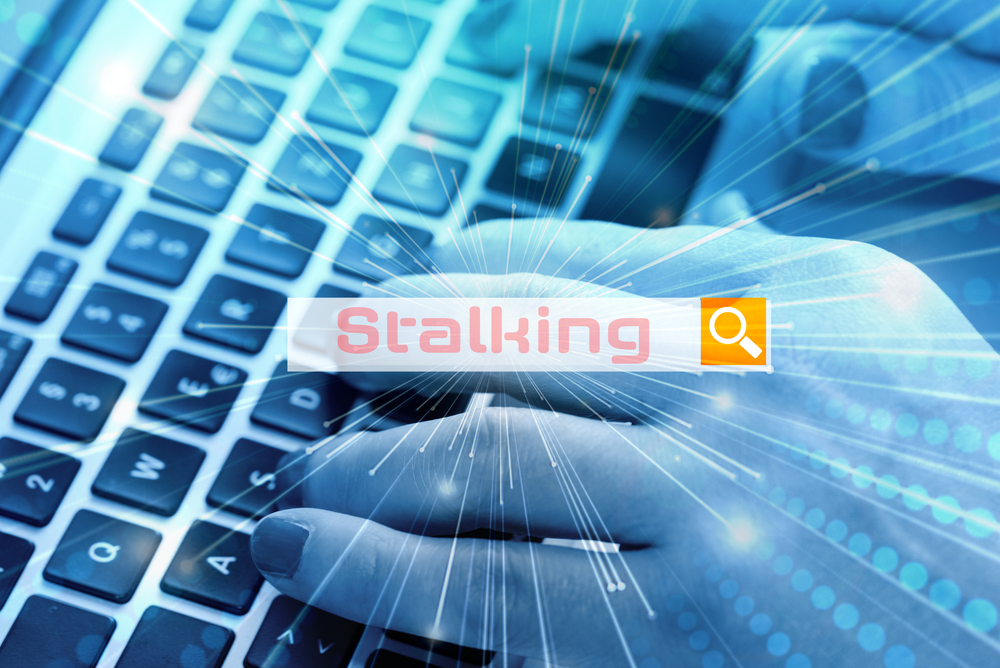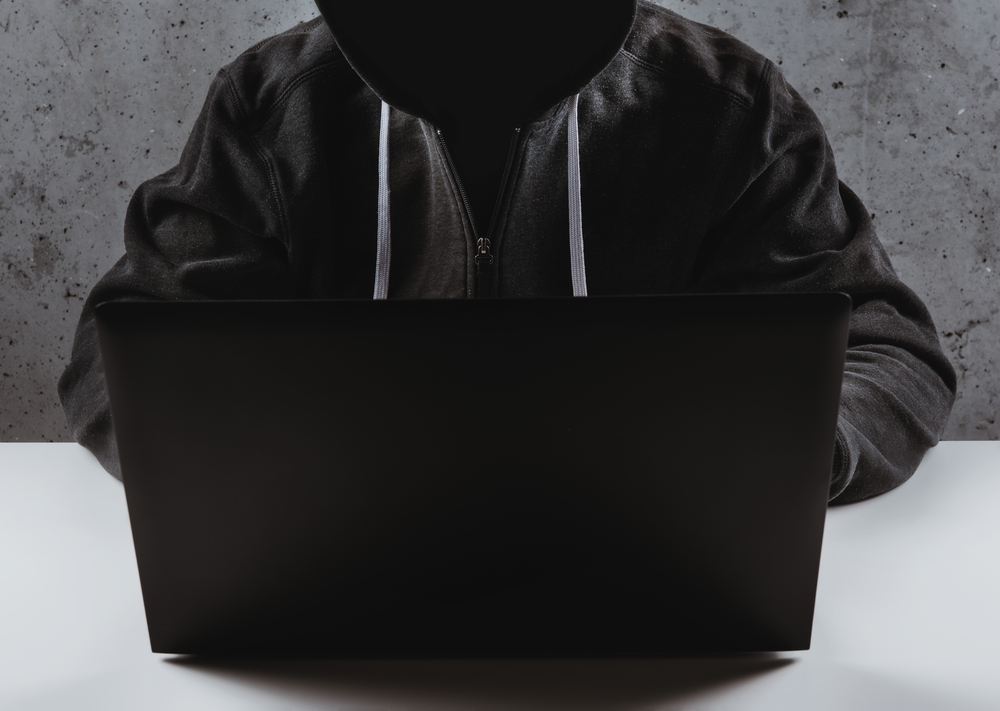Apple AirTags and Other Location Trackers Used by Stalkers
by Reese Kimmons, MS ISA
In our previous article on the growing problem of unauthorized tracking, we discussed stalkerware apps being used by domestic abusers to track and eavesdrop on their victims.
While these apps can provide a tremendous amount of information to criminals, they aren’t that easy to deploy. The stalker must get access to the victim’s device and have the permissions necessary to install the app.
An easier alternative is to hide a location tracking device in the victim’s vehicle, in a purse or wallet, or in a coat pocket. All the bad actor will receive from one of these devices is victim location data, but that may be all that is needed.
In this article, we’ll discuss the capabilities of the Apple AirTag, Tile’s Bluetooth tracking device, and the asset/people tracker offered by LandAirSea. A New York Times journalist tested and reported on the people-tracking functionality of these three trackers and we’ve included a summary of her findings as well.
We’ll also take a look at how the manufacturers of these devices are addressing concerns about the potential for their misuse.

About Apple’s AirTag
The small, round AirTag is 1.26 inches in diameter and can be attached to a key chain, placed into a pocket or purse, dropped in the glove box of a car, or hidden just about anywhere else that it will fit. Once deployed, AirTags send out Bluetooth signals that are picked up by any iPhone or iPad “Find My” app users within range.
These users’ devices effectively form a network that allows AirTags to connect to iCloud and report their locations to their owners. Using their Find My app, AirTag owners can then find and track the locations of their deployed AirTags.
Although these devices are marketed as tools to help users find misplaced items, Apple states on its site that AirTags can be used to “keep up with friends and family.” If they can be used for that, they can be misused by stalkers.
About the Tile tracker
Tile is a Bluetooth device that can be affixed to just about anything. It’s the approximate size of a credit card and only slightly thicker. Like the AirTag, Tile also takes advantage of a “Tile network” of other users to increase range, coverage, and tracking capabilities.
The Tile app must be installed on your device to use this tracker. When you add a new Tile, the app will identify it and establish a connection. Once connected to the Tile app, the tracker will access your device’s location services to communicate its whereabouts to its app.
Similar to the AirTag, you can cause your Tile to emit a sound to help you find nearby lost items. Tile also allows you to view a tracker’s last known location on a map in the Tile app. A user can also activate a setting within a Tile to send a notification if or when the device is found and reconnects to the Tile network.
You can read more about Tile trackers here. When last we checked prices and availability of the Tile tracker range (Sept 2022), there was a shortage of Tile Mate and Tile Pro, but the Performance and Essentials packs were available.
Tile is advertised as a tool for finding things, not tracking people, but it can be used for either.
About the LandAirSea tracker
Unlike AirTags and Tiles, this tracker does not require a network of nearby users to communicate over long distances. The LandAirSea tracker, about the size of a hockey puck, is capable of continuously reporting its GPS location using 4G LTE and satellite connectivity.
This means it can communicate with its owner in real time from just about anywhere in the world, but it also means that a monthly subscription fee is required to maintain its 4G connectivity.
Users of this tracker can set up email and text alerts and use the device app to track and playback location information and movement data. The device can also provide data regarding stops made and idle time.
Users can set up what is called an InstaFence. Alerts can then be sent to the user when the tracker moves outside of the fence’s boundaries.
If secrecy is a concern, the LandAirSea tracker can be placed in Dark Mode, which deactivates lights on the device. This tracker is also waterproof and has a strong internal magnet that allows it to be easily attached to vehicles.
This is definitely the most technologically advanced tracker of the three. If you are looking for a device to monitor a fleet of delivery vehicles, this would be a good choice.
You can read more about the various LandAirSea trackers here. We noticed that the impressive LandAirSea 54 was out of stock when we last checked (Sept 2022), but the cheaper OBD2 GPS was still available.
Unfortunately, its good points also make it very useful to stalkers. Additionally, the fact that the LandAirSea device does not use Bluetooth means that, unlike AirTag and Tile, it cannot be easily detected using a phone app.
If a LandAirSea device is tracking you, chances are you will not know it unless you just happen to see the device.
Recommended Reading: 12 Tips to Manage Your Online Privacy and Protect Your Identity in 2022
How these trackers work in real-life situations
Journalist Kashmir Hill, with the permission of her cooperative husband, put the AirTag, Tile, and LandAirSea trackers to the test. Her results were published in a New York Times article.
Hill’s husband agreed to allow her to track his movements, but didn’t know how many trackers would be used or where his wife would hide them. Hill concealed one of each of the trackers in various locations in her husband’s car. She also hid all three trackers in various pockets of his backpack before he left on a trip.
Hill found that the Tile and AirTag trackers that relied on networks of users being within Bluetooth range were not very effective at relaying real-time tracking data when her husband wasn’t in heavily-populated areas. And, between the two, Tile was less effective overall than AirTag because there are fewer Tile users than there are iPhone users.
Hill reported that the LandAirSea tracker, with its 4G and satellite communications and GPS tracking functionality, was the top performer of the three while her husband was traveling through rural areas. LandAirSea allowed her to track her spouse without interruption during times when her Tile and AirTag trackers were essentially offline.
Hill was able to set alerts for the LandAirSea tracker that notified her when her husband crossed InstaFence boundaries. She also made use of the playback feature to view her husband’s travel history as recorded by the device.
When Hill’s husband reached Manhattan, the AirTag began to perform very well. Hill was able to view her test subject’s travel information in real time. This was due to the large number of iPhone and iPad users concentrated in the area. Hill’s AirTag had no problem finding iPhone Bluetooth connections that allowed it to transmit data via iCloud and communicate in real time with Hill’s device.
In sparsely populated areas, AirTag’s reports of her husband’s whereabouts had been delayed by up to an hour.
While Tile’s performance also improved in this heavily populated area, it did not perform as well as AirTag. As more Tile devices are sold and more users are added to the network, coverage and performance should improve.

What tracker manufacturers are saying and doing about potential misuse
Apple has taken action in response to concerns regarding the potential use of AirTags by stalkers. The company enabled functionality that alerts iPhone and iPad users if an AirTag that doesn’t belong to them is traveling with them.
Hill reported that, within two hours of getting into the vehicle, her husband received an alert on his iPhone regarding the AirTag she placed in his car. Unfortunately, he couldn’t find the tiny device.
The alert her husband received provided an option to cause the AirTag to make a noise to allow him to find it, but that option didn’t work initially. After trying multiple times, he did get the tracker to make a noise. He still couldn’t find the device and had to ask his wife where she hid it so that he would not need to resort to conducting a more destructive search.
Apple has taken additional steps to reduce the likelihood that AirTags will be used for nefarious purposes. They have released an app for Android users that will allow them to detect unwelcome AirTags. The app is called Tracker Detect and is available via the Google Play Store.
Unfortunately, the app doesn’t work automatically. Users must open Tracker Detect and run a manual scan to locate any nearby AirTags.
Apple is now displaying a message each time a user sets up a new AirTag device. The message warns that the these devices are to be used for tracking property, not people, and that tracking people could result in criminal prosecution.
Apple has also released Precision Finding capabilities available to users of iPhone 11 and up. This functionality makes it easier for users to find an AirTag if they receive an unwanted tracking alert.
Additionally, when an unrecognized AirTag emits a sound to notify iPhone users of its presence, the alert they receive on their phones will provide more options to assist them in finding the device.
Read Apple’s statement about AirTags and making illicit tracking harder here: https://www.apple.com/newsroom/2022/02/an-update-on-airtag-and-unwanted-tracking/
In her article, Kashmir Hill states that manufacturer of Tile markets its devices as tools to be used to find misplaced items and not for stalking.
Hill contacted Tile spokesman Scott Coriell to get his comments. Coriell confirmed that “Tile is designed to help people find their things, not for tracking people.”
Coriell added that misusing their devices to track people is a violation of their terms of use policy and could result in individuals being permanently banned from utilizing Tile trackers.
LandAirSea is a different story. According to Hill, the company has described its device as “the ultimate in discreet tracking” on its Amazon page.
Per Hill’s article, the Amazon page also stated that LandAirSea allows you to “keep track of movement in real time with your very own private eye.”
Hill spoke with LandAirSea’s Director of Analytics, Jared Zientz. Zientz admitted that the topic of unwanted tracking comes up with regularity. According to Hill’s article, he told her that the company does receive calls from people who have found LandAirSea trackers in their vehicles. Per Zientz, the callers sometimes ask what the company intends to do about it.
Zientz said he tells callers to contact the police and that the company will not provide information about an owner of a found device unless they receive a subpoena ordering them to do so. Zientz told Hill that the company gets about 30 of these subpoenas annually.
Per Hill’s article, Zientz claimed LandAirSea discourages the use of its devices for stalking by marketing them as tools to be used for “asset protection” and “fleet management.”
When asked by Hill to explain why the company didn’t have any information on its website to differentiate between legal and illegal use of its devices, Zientz replied, “It’s in our terms somewhere.”
The unlawful use of trackers
As is the case with stalkerware including misused legitimate apps intended to help parents keep their children safe online, possessing and using location tracking devices to find your keys and wallet isn’t illegal.
If, however, you secretly drop a tracker into your ex’s handbag and use it to trace her every move, you could end up in jail.
What to do if you find a tracker
If you find that a tracking device has been placed in your vehicle, handbag, pocket, or somewhere else that will allow it to trace your movements, consider contacting local law enforcement. If you have reason to believe you are being stalked, you should definitely call police and report your find.
If you are currently involved in a divorce, discuss the matter with your attorney. Those who have court cases pending that involve stalking or domestic abuse may also be eligible for assistance from support groups.
Law enforcement, your attorney, or the court handling your case may be able to refer you to one of these groups if needed.
Final thoughts…
AirTags, Tiles, and LandAirSea devices are but a few of the trackers available to anyone who wants them. Some that provide decent functionality can be purchased for less than $30.
These devices will help you find your lost keys, determine where you parked your car, and keep track of your children.
Unfortunately, as with parental monitoring apps being repurposed by domestic abusers as stalkerware, these small, concealable, and inexpensive devices are being used by criminals to track their targets.
They can be very hard to find if well-hidden. If you do find one, consider reporting your discovery to your local law enforcement agency.
Recommended Reading: Stalkerware – What is it? And how to find, remove and report it.
About the Author:
Reese Kimmons is an experienced IT executive with an AAS in Applications Programming, a BS in IT Management and an MS in Information Security and Assurance. During his time in the IT industry, Reese has earned certifications in ethical hacking, forensics investigations, ISO/GIAC, and Cisco networking.
- How Secure is Your Car? Tips to Stop Car Key Fob Hacking - December 17, 2022
- Cybercriminals Raking in Millions with “Hi Mom” WhatsApp Scam - December 17, 2022
- EU Websites Charging Visitors to Reject Tracking Cookies: A Practice Expected to Spread - December 17, 2022





